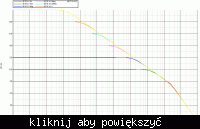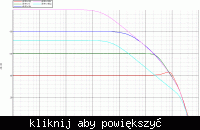banvetor
Junior Member level 1
Hi guys,
I've been playing around with the design of a high-gain high-BW transimpedance amplifier (TIA).
I've read again and again the theory behind all this but I have a question that maybe is a bit stupid, but...
What happens if I try to set the TIA gain higher than the DC gain of the amp-op?
For instance, if I need a 50k ohms gain for the TIA, but my amplifier has a 10k DC gain with 10Mhz GBW?
The end result would be what, it would oscillate?
Thanks!
I've been playing around with the design of a high-gain high-BW transimpedance amplifier (TIA).
I've read again and again the theory behind all this but I have a question that maybe is a bit stupid, but...
What happens if I try to set the TIA gain higher than the DC gain of the amp-op?
For instance, if I need a 50k ohms gain for the TIA, but my amplifier has a 10k DC gain with 10Mhz GBW?
The end result would be what, it would oscillate?
Thanks!

